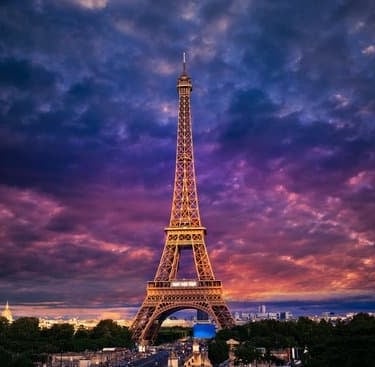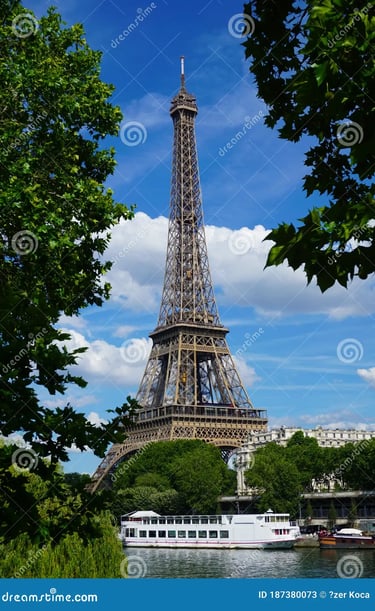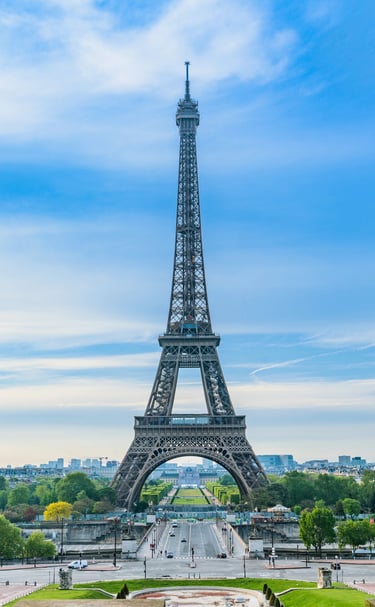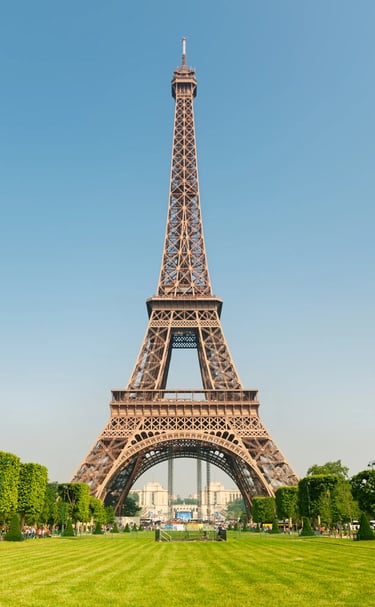1.Eiffel Tower
Discover the fascinating story behind the Eiffel Tower, from its controversial beginnings to iconic status.
Eiffel Tower
Built for the 1889 World’s Fair:
The Eiffel Tower was constructed to celebrate the 100th anniversary of the French Revolution. It served as the entrance arch to the Exposition Universelle (World’s Fair) held in Paris in 1889.Designed by Gustave Eiffel:
Although named after Gustave Eiffel, the tower was actually designed by his engineers Maurice Koechlin and Émile Nouguier. Eiffel’s company built it, and he played a key role in its promotion and construction.Controversial at first:
When it was first announced, many Parisians and artists criticized the design, calling it an eyesore. However, after its completion, it gradually gained appreciation and became symbol of modernity.








Eiffel Tower
Eiffel Tower
Eiffel Tower
2.Louvre Museum
Originally a fortress (12th century):
The Louvre was first built in 1190 by King Philip II as a medieval fortress to protect Paris from invasions. Parts of this old structure can still be seen in the museum’s basement today. Transformed into a royal palace (16th century):
In the 16th century, King Francis I converted the old fortress into a Renaissance-style royal residence. He was also the one who acquired the Mona Lisa from Leonardo da Vinci.


3.Notre-Dame de Paris
Construction began in 1163:
Notre-Dame Cathedral was commissioned by Bishop Maurice de Sully and construction started in 1163, during the reign of King Louis VII. It took nearly 200 years to complete, finishing around 1345.
A witness to history:
Napoleon Bonaparte crowned himself Emperor here in 1804.
It survived the French Revolution, though many religious statues were destroyed.
It was the site of many royal and national events over the centuries.


4.Montmartre & SacréCœur Basilica
Mount of Martyrs
Named after Saint Denis, the first bishop of Paris, who was beheaded here in the 3rd century for preaching Christianity.Artistic hub:
In the late 19th and early 20th centuries, Montmartre became a bohemian center, attracting artists like Pablo Picasso, Vincent van Gogh, Claude Monet, and Henri Toulouse-Lautrec. Many lived and worked here, especially around the Place du Tertre.Cultural vibe:
Known for its cobblestone streets, windmills, and cafés, Montmartre has long been associated with freedom, creativity, and nonconformity.
Montmartre


5. Palace of Versailles (Château de Versailles)
The Palace of Versailles began as a modest hunting lodge built by King Louis XIII in 1623. His son, Louis XIV, transformed it into one of the most magnificent palaces in the world, starting in the 1660s. By 1682, Versailles became the official residence of the French monarchy and a symbol of royal power and extravagance. The palace is renowned for its Hall of Mirrors, grand gardens, and luxurious architecture. It played a central role in French political life until the French Revolution in 1789, when King Louis XVI and Marie Antoinette were forced to leave. Later, in the 19th century, the palace was turned into a museum, and today it stands as a UNESCO World Heritage Site and one of the most visited historic monuments in France.


Versailles






SB/C/6L/OFFICE/012A M3M, URBANA SEC67
Vil.MAIDAWAS, Bhondsi, Gurgaon, Bhondsi, Haryana, India, 122102
contact us
For inquiry
buztrixtraveltechindiapvtltd@gmail.com
+91 92209 43717
© 2025. All rights reserved.
